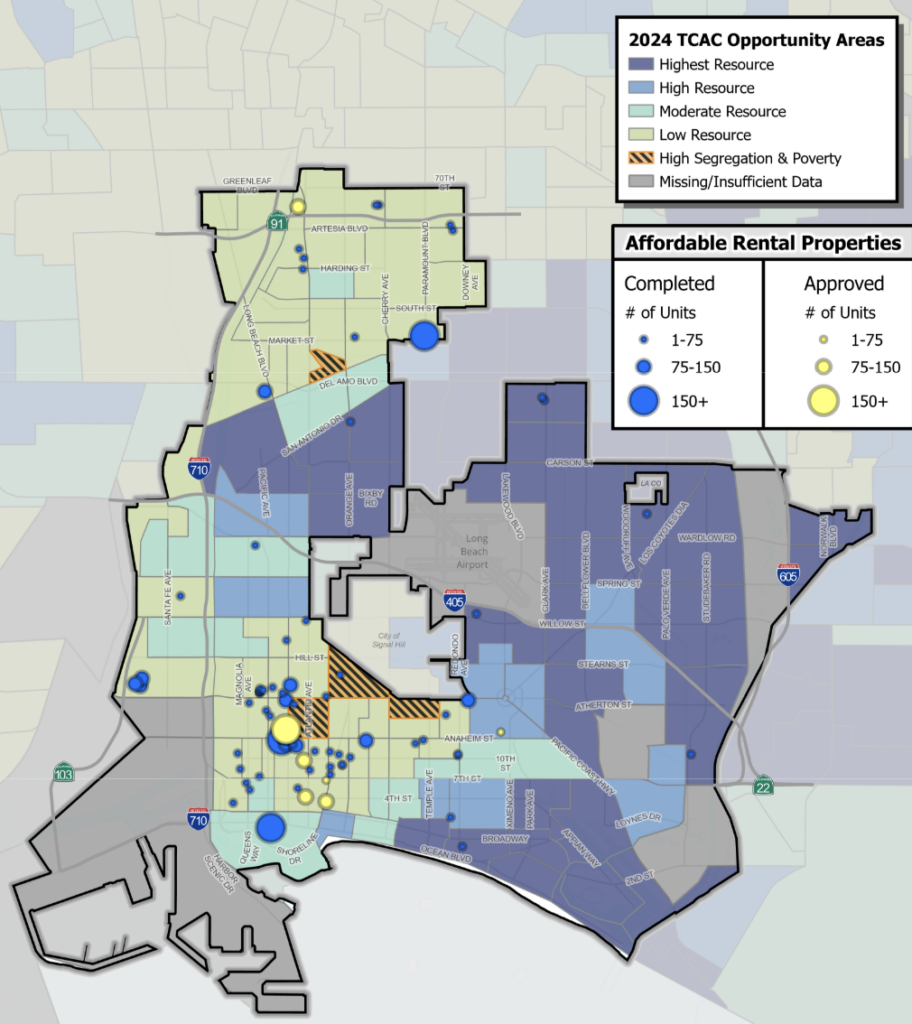Long Beach, which is among the most housing-segregated cities in the country, is considering a new policy that would require more affordable housing units in wealthy areas and more expensive units in poor areas.
The new policy, which could be in place as soon as January, would require at least 11% of units in large apartment buildings in wealthy places like Belmont Shore and Bixby Knolls be set aside for individuals who make under $48,550 a year.
Meanwhile, the changes could require developers to set aside 19% of all units for those who make over $82,500 a year in areas that are extremely poor and segregated, such as Carmelitos in North Long Beach, which has the lowest per capita income in the city at less than $12,000 a year.
The changes being considered to the city’s “inclusionary housing” policy are not only intended to increase affordable housing in general — which the city is required to do — but also to reduce racial and economic segregation throughout the city.
Support watchdog journalism
Who has eyes on City Hall? We do. The Long Beach Post is now a 501(c)(3) nonprofit. Donate now to support independent accountability journalism that cuts through the political spin.
“This is a legal mandate that we have as a city, to not only combat discrimination but also take meaningful action to proactively address segregation to make sure that we have neighborhoods that are racially and economically inclusive,” Stephanie Harper, a project manager for the city, told a council committee on Tuesday.
The city has made progress in its mandate to make room for more than 26,000 new housing units by 2028, but most of the affordable units that have been built are in places that are already poor or very dense, like Downtown.
Meanwhile, roughly seven affordable projects have been completed in “high resource” areas, which are identified by the state each year depending on their access to good schools, parks, healthy food and more. Another affordable project near the Traffic Circle has been approved in this area.

Long Beach, along with many other cities along the West Coast, is required to diversify its housing stock and give more opportunity to those who have historically lacked access to these wealthier areas.
In Long Beach, and most other places, housing opportunity is starkly divided along racial lines. Three of the four lowest-income and most economically segregated Census tracts in the city are predominantly Latino, while the fourth — Carmelitos in North Long Beach — is predominantly Black.
The Latino-dominated Census tracts are in Central Long Beach, immediately to the south and southwest of Signal Hill along Pacific Coast Highway.
All four of these areas have poverty rates that are more than double the city’s rate of 15%, and about half of those living in poverty in the three Central Long Beach areas are children under 18.
In one dense area just north of St. Mary Medical Center, 92% of residents are renters and only 10% have attained a bachelor’s degree or higher, according to the 2022 Census.
Meanwhile, a few hundred yards to the southwest of Carmelitos, the Virginia Country Club area has a poverty rate of 2.3%. In one of the richest areas of the city, Naples Island, three-quarters of residents are white and the per capita income is over $100,000 a year.
A 2021 study by UC Berkeley showed Long Beach is counted among cities in the U.S. with the highest housing segregation. It is a problem all over the West Coast and is particularly acute in the Bay Area.
Long Beach will consider these policy changes over the next nine months. The Planning Commission is expected to hold a hearing in August, followed by a possible City Council decision in November.
The policy could be effective as soon as Jan. 1.
Editor’s note: This story has been updated to reflect the very low income level for an individual in 2024 is $48,550. The map showing where affordable projects have approved across the city has also been updated to reflect that only one project has been approved in higher resource areas.

